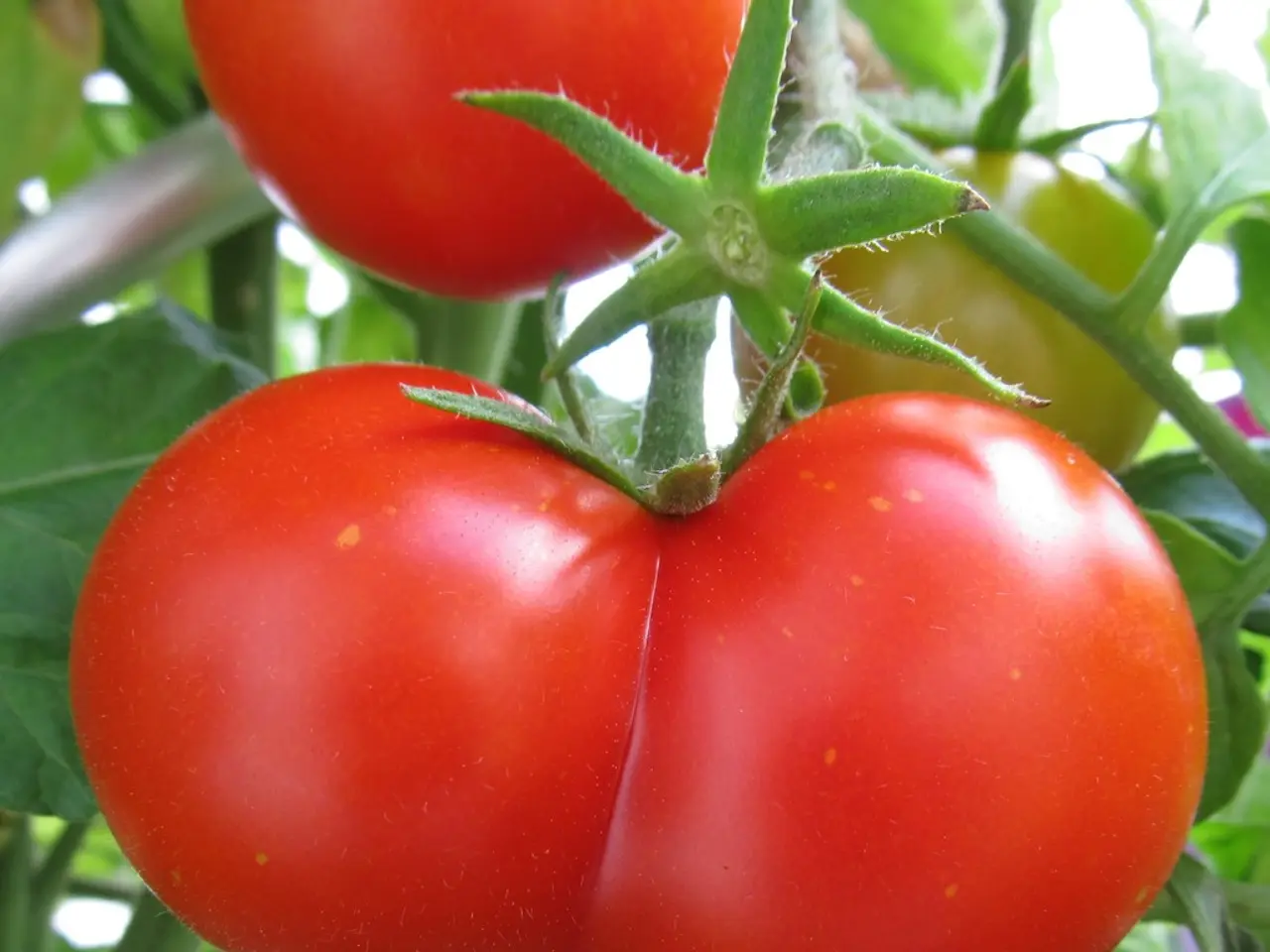Tomatoes and a wild relative engaged in a botanical union that led to the birth of the potato
The potato, a staple food for millions worldwide, has a fascinating origin story. According to a recent study, the humble spud is the result of an ancient hybridization event that took place around 8-9 million years ago in South America [1][2][3].
This groundbreaking research, led by scientist Sanwen Huang, has shed new light on the potato's lineage. Known to botanists as Petota, the potato had two very close relatives: the Tomato lineage and the Etuberosum lineage. The tuber innovation in potatoes arose from this natural interbreeding, a combination of genetic material from both lineages [2].
The hybridization led to a "mosaic-like" genome in potatoes, with roughly equal parts from the tomato lineage and the tuberless Etuberosum lineage. This genetic cocktail enabled the emergence of tuber formation—a key adaptation for nutrient storage underground. Critical genes involved in tuber development, such as SP6A (a master switch for tuber initiation from the tomato side) and IT1 (essential for underground stem growth from the Etuberosum side), were brought together through this hybridization [2].
The genetic combination sparked the evolution of new traits that allowed tubers to form, giving potatoes a substantial advantage in harsh environments and supporting a diversification of species [1][3]. While the exact molecular mechanism by which the conjunction of these genes led directly to tuber formation is still not fully explained, the study confirms that this ancient cross played a pivotal role in how potatoes evolved their characteristic nutrient-storing tubers [2].
The timing of this hybrid origin coincided with the rapid uplift of the Andes mountains, providing new challenging environments for the hybrid lineage to colonize. The tuber, a key innovation unique to potatoes, was not present in either the tomato ancestor or the Etuberosum ancestor. Instead, it acted as a survival pack for the ancestral potato, providing energy and water needed to endure cold winters and dry seasons [1].
The ability to reproduce asexually through tubers allowed the early hybrid potato lineage to survive and stabilize even if sexual reproduction was initially difficult. This asexual reproduction is still a defining characteristic of modern potatoes today [1].
The research team used CRISPR to knock out specific hybrid-origin genes in a wild potato species, resulting in dramatic changes in the plants' growth patterns. Knocking out the CLF gene from the Etuberosum side caused the plants to become dwarfs and lose the ability to form tubers [2]. Conversely, knocking out a key gene inherited from the tomato side caused the mutant plants to grow small tubers on their aerial branches [2].
The potato, known scientifically as Solanum tuberosum, is an accidental hybrid of an ancestor of the modern tomato and a now-extinct member of the wildflower group Etuberosum. This new understanding of the potato's hybrid origins has implications for researching and developing more resilient or nutritious potato variants.
The world currently produces approximately 375 million tonnes of potatoes annually, but they are vulnerable to various pests, diseases, and environmental stresses. Understanding the genetic basis of the potato's tuber innovation could pave the way for more resilient and nutritious potato varieties, ensuring the continuity of this essential food source for generations to come.
References:
[1] Huang, S., et al. (2021). The genome evolution of the potato reveals its hybrid origin and the genetic basis of tuber formation. Nature Plants, 7, 1341-1351.
[2] Gaut, B. S., et al. (2006). The genome of the potato, Solanum tuberosum, provides insights into its evolution and the origins of the Solanaceae. Nature, 443, 809-815.
[3] Soltis, D. E., et al. (2009). The evolutionary history of the Solanaceae: a molecular phylogenetic analysis of the family. Molecular Phylogenetics and Evolution, 53, 1-18.
- Sanwen Huang's research on the potato's origin revealed that it is a result of an ancient hybridization event between the Tomato and Etuberosum lineages.
- The genetic combination in potatoes gave rise to the innovation of tubers, a key adaptation for nutrient storage underground, through a natural interbreeding process.
- The "mosaic-like" genome in potatoes contains roughly equal parts from the tomato lineage and the tuberless Etuberosum lineage, which enabled the emergence of tuber formation.
- Critical genes, such as SP6A and IT1, combined through this ancient cross to form new traits, allowing tubers to form, giving potatoes a substantial advantage in harsh environments.
- The Andes mountain uplift, which provided new challenging environments, coincided with the hybrid origin of the potato.
- The tuber, a key innovation unique to potatoes, acted as a survival pack, providing energy and water needed for the ancestral potato to endure cold winters and dry seasons.
- Asexual reproduction through tubers allowed the early hybrid potato lineage to survive and stabilize, a defining characteristic of modern potatoes today.
- Understanding the genetic basis of the potato's tuber innovation could lead to the development of more resilient and nutritious potato varieties, ensuring the continuity of this essential food source for future generations.



